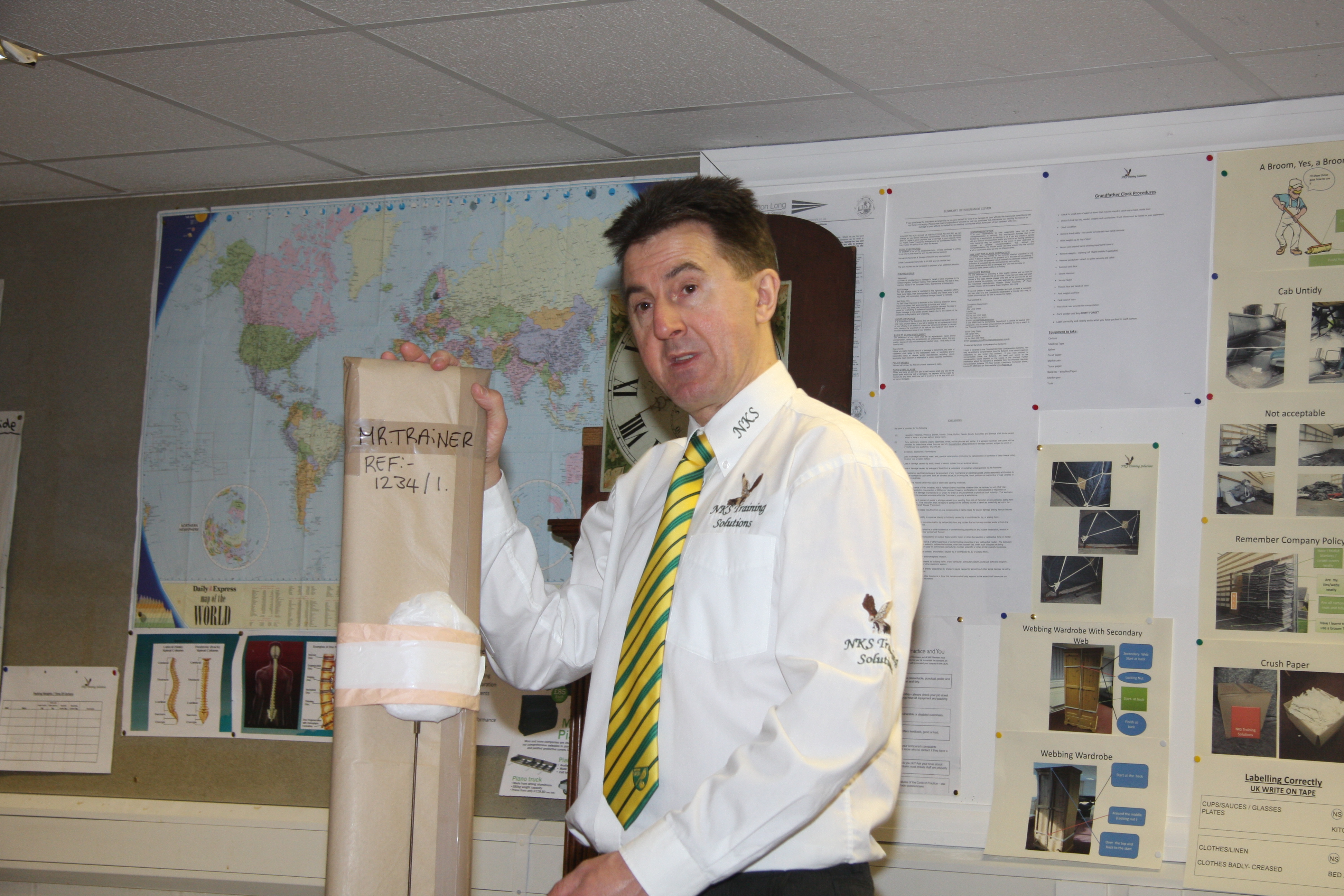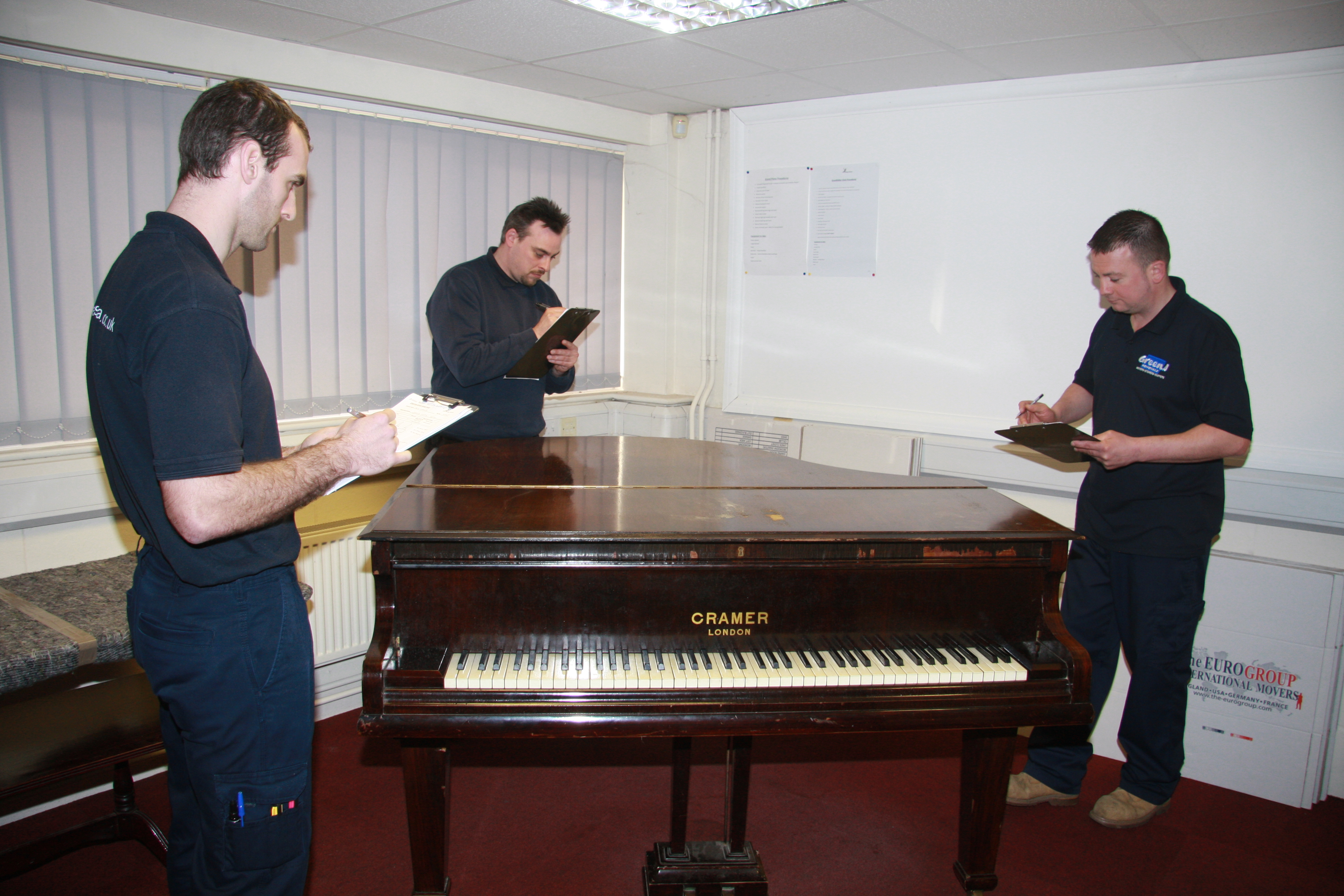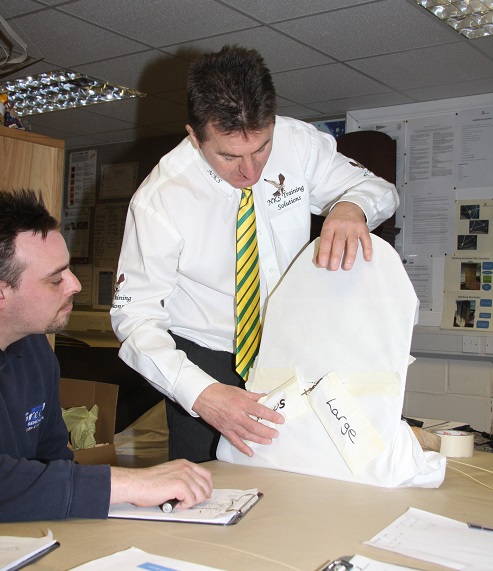Deputy Editor David Jordan takes a trip to NKS Training Solutions in Norfolk to get the lowdown on how to move grandfather clocks and grand pianos.
First a confession. Although I write for The Mover magazine I’ve never really been a removal man and I’ve certainly never tried to move a piano or longcase clock; so when NKS invited me to sit in on one of their training courses and learn how it should be done, I decided to take them up on the offer.
I’d been told by NKS’s Director and Training Manager Nick Saker to be there for 8 am, which meant an early start from my home in Bedfordshire – Nick’s promise of a bacon roll for breakfast spurred me on.
Nick has been in the removals business for over 30 years and worked as a trainer for a number of top removals companies before starting his own training company in 2014.
The day began with the usual introductions. There were five of us on the course, Harry, Gavin, Andy, Louis, all from the same company, and me. They were all experienced movers so I was happy to let them take the lead while I watched and listened. Nick works on a maximum ratio of six to one, so everyone has to keep focussed. Mobile phones are strictly banned until tea break.
 NKS runs a whole range of courses covering almost every aspect of removals, including Driver CPC and forklift training. This time the whole day was dedicated to grandfather clocks and grand pianos. Nick started by explaining the differences between the many types of pianos from relatively small baby grands to the magnificent concert grands used by the likes of Elton John and Lang Lang.
NKS runs a whole range of courses covering almost every aspect of removals, including Driver CPC and forklift training. This time the whole day was dedicated to grandfather clocks and grand pianos. Nick started by explaining the differences between the many types of pianos from relatively small baby grands to the magnificent concert grands used by the likes of Elton John and Lang Lang.

We began by carrying out a condition report on the resident grand piano before removing the pedals, legs, lid and hinges and tipping it keyboard-first into the shoe. After wrapping the instrument carefully with woollies and tightly securing it with webbing to piano wheels, everyone practised manoeuvring the piano through doorways and around obstacles strategically placed to simulate a real move. It all looked surprisingly simple, but so does everything, when you know how.
 The second half of the day began with an in-depth look at the workings of a typical longcase clock and the important things to look out for when preparing them for a move. “Always look inside the bottom of the clock,” said Nick. “In days gone by people often used to hide money in them and it could be that a stash has been forgotten!” I checked my own clock when I got home, but sadly my Yorkshire grandmother was not one to leave money hanging around.
The second half of the day began with an in-depth look at the workings of a typical longcase clock and the important things to look out for when preparing them for a move. “Always look inside the bottom of the clock,” said Nick. “In days gone by people often used to hide money in them and it could be that a stash has been forgotten!” I checked my own clock when I got home, but sadly my Yorkshire grandmother was not one to leave money hanging around.
 Again, everyone practised completing a condition report before Nick demonstrated how to remove the weights, hood, pendulum and movement from the training centre’s antique grandfather clock and the correct way of packing them for transit. As with the piano, everything was very hands on and Nick’s interactive style of instructing kept everyone involved and alert throughout the day.
Again, everyone practised completing a condition report before Nick demonstrated how to remove the weights, hood, pendulum and movement from the training centre’s antique grandfather clock and the correct way of packing them for transit. As with the piano, everything was very hands on and Nick’s interactive style of instructing kept everyone involved and alert throughout the day.
As I said at the beginning, I have never been a removals man, but my day at NKS gave me an insight into the considerable skills and knowledge needed to do the job properly. Training is obviously vital, not just for moving antiques, but with all household items. While removals is, puzzlingly, still not recognised as a trade, there are huge differences between movers who are properly trained and those who are not. It is up to everyone in the industry to get that message across to the customer.
Photos: Nick Saker preparing the piano for transit, and doing likewise with the clock fac. , Preparing a condition report; explaining the internals of a long case clock and packing the clock’s pendulum.